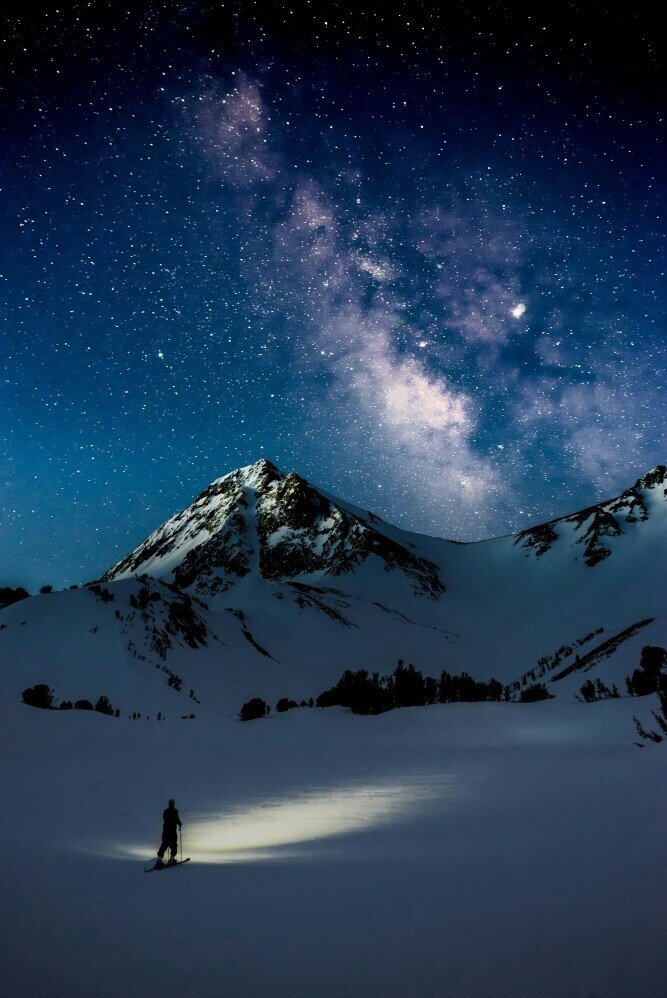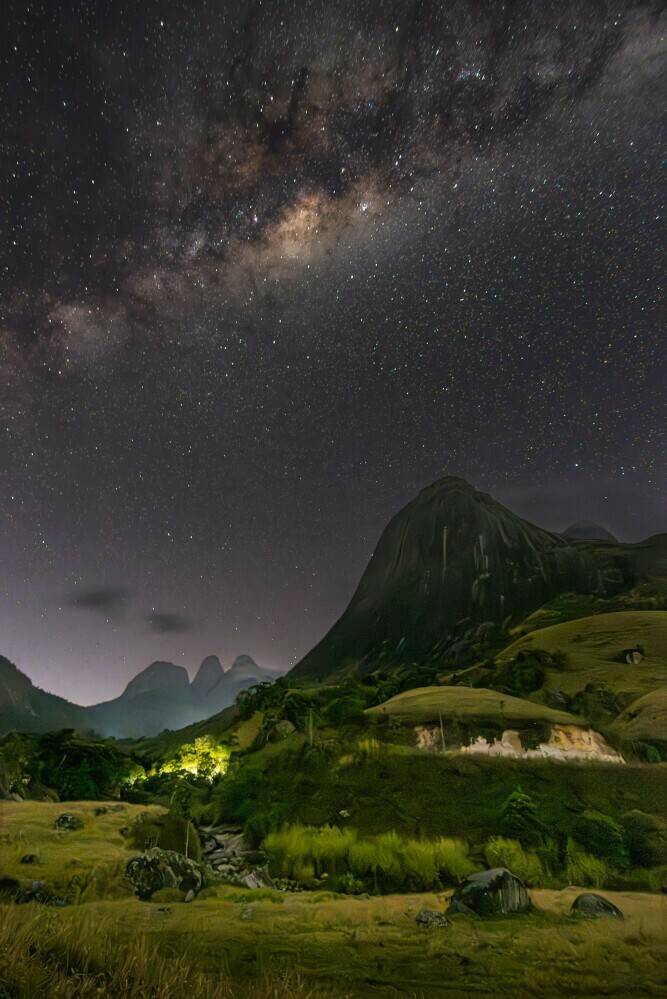 Robson Hatsukami Morgan (2019) [Photograph] Unsplash
Robson Hatsukami Morgan (2019) [Photograph] Unsplash
The Northern Lights, or Aurora Borealis, are nature’s most spectacular show. As a photographer, I find capturing this celestial phenomenon challenging and delightful. When done right, the vibrant colors dancing across the night sky can yield breathtaking images. Within Night Sky Photography, northern Light Photography stands out for its unique beauty and the special techniques it requires.
Good photography is as much about skill as it is about perspective. How the Aurora Borealis interacts with the landscape can turn a simple photo into a masterpiece. It’s here that the concept of Foreground Interest comes into play. This technique isn’t just a buzzword; it’s critical for adding depth, context, and a focal point to Landscape Photography, turning your snapshots into compelling stories.
But simply knowing about Foreground Interest isn’t enough. As a photographer, you must understand how to use it effectively to elevate your Northern Lights shots. This is where I can offer some insight based on experience. When you know what to look for and how to position it, the foreground can transform a simple composition into an arresting visual narrative that commands attention.
In the next section, I’ll delve into the specifics of Foreground Interest and explain why it’s such a game-changer in Northern Lights Photography. I’ll also provide real-world examples and actionable advice for weaving this powerful technique into your photographic tapestry.
The Art of Using Foreground Interest in Northern Lights Photography
 Alexander Milo (2017) Iceland [Photograph] Unsplash
Alexander Milo (2017) Iceland [Photograph] Unsplash
Foreground Interest isn’t just a buzzword; it’s a powerful tool that anchors your viewer’s attention in the scene. It’s the difference between a flat image and a dynamic story. In Northern Lights Photography, a well-chosen foreground can transform a stunning shot of the celestial phenomenon into a masterpiece of Landscape Photography.
Consider a tree’s silhouette against the aurora’s vibrant curtains to grasp this concept. The tree isn’t merely a dark shape; it’s a subject that adds scale, depth, and narrative to your composition. Including such elements is more than adding beauty; crafting a story draws the viewer in.
Successful shots often involve experimenting with different foregrounds. Some photographers might choose a reflective lake, while others prefer the rough textures of ice formations or the contours of a mountain range. The idea is to balance the ethereal lights and the earthly anchor.
Remember, the goal is to guide the viewer’s eye from the foreground to the aurora, creating a connection between the elements. To achieve this, ALIGN YOUR COMPOSITION with leading lines or natural frames within the landscape. A winding river or a trail of footsteps in the snow can serve brilliantly for this purpose.
Patience and creativity are key when finding the right foreground for your shots. Sometimes, you might find yourself waiting for hours in the cold, adjusting your tripod, fine-tuning the focus, or moving a few steps to the left or right to nail the perfect angle. It’s all part of the pursuit of capturing the Northern Lights in the most compelling way possible.
Aurora Chasing: Planning Your Photo Expedition
 Chong Wei (2021) Canada [Photograph] Unsplash
Chong Wei (2021) Canada [Photograph] Unsplash
When it comes to capturing the Northern Lights, there’s more to it than just clicking the shutter button. Your journey, the arduous yet thrilling pursuit of the aurora borealis, begins long before you capture that first green glow in the sky.
The celestial phenomenon you’re after doesn’t happen on command, so planning is crucial. To predict its appearance, you’ll need to familiarize yourself with the aurora cycle. The geomagnetic activity that fuels these lights typically peaks around the equinoxes, making spring and fall favorable times to plan your expedition.
Let’s talk gear. To do night sky photography justice, a sturdy tripod is a non-negotiable to avoid camera shaking during long exposures. A camera capable of manual mode and a wide-angle lens will help you frame the vast landscape and the sweeping lights above. Don’t forget spare batteries; they drain faster in the cold.
Finding the ultimate location is a marriage between science and art. It involves understanding geomagnetic data and local weather patterns but also leans heavily on creative instincts—Scour maps for open areas with minimal light pollution. Consider the foregrounds we discussed earlier: a reflective lake or a mountain silhouette can transform your composition.
Your safety is just as crucial as your snapshots. Dress warmly in layers, pack emergency supplies, and travel with a companion if possible. Watch the weather and be prepared for the fickle conditions often found at latitudes where the Northern Lights are most visible.
In short, with a dash of preparation and a touch of patience, you’ll set the stage for great photography and an adventure that’s every bit as mesmerizing as the aurora itself.
Post-Processing Techniques to Enhance Northern Lights Imagery
 Bruno Litaldi (2024) Teresópolis, Teresópolis, Brasil [Photograph] Unsplash
Bruno Litaldi (2024) Teresópolis, Teresópolis, Brasil [Photograph] Unsplash
Once you’ve braved the cold night and captured the elusive dance of the auroras, the journey to perfect your Northern Lights photography isn’t over. Post-processing plays a pivotal role in bringing out the best in your images. Despite the night sky’s dominance in these shots, the importance of foreground interest cannot be understated, even during editing.
The proper editing software can work wonders, transforming a good photo into a masterpiece. When tackling Night Sky Photography, especially images with the aurora, your goal during post-processing should be to enhance the foreground to complement the sky without overpowering the celestial phenomenon that is the main attraction.
Let’s discuss some non-destructive editing techniques that should be part of your post-processing workflow. These include adjusting exposure to ensure your foreground isn’t lost in shadow, honing color balance to reflect the scene’s natural hues, and tweaking contrast to make the foreground elements pop against the vibrant background of the aurora borealis.
Remember to keep your enhancements realistic when enhancing your Northern Lights images. The aurora is captivating enough on its own; your edits should aim to support, not overshadow, the natural beauty of this celestial event. Finally, as you apply the finishing touches, zoom in on the details that matter. Are the textures in your foreground interesting, sharp, and clear? Does the composition guide the viewer’s eye to the aurora’s grandeur? These are the little things that amplify the overall impact of your Landscape Photography.
With patience and an eye for balance, your post-production efforts will highlight the magnificent aurora borealis and the thoughtfully selected foreground interest, creating a cohesive and stunning representation of one of nature’s most awe-inspiring displays.
